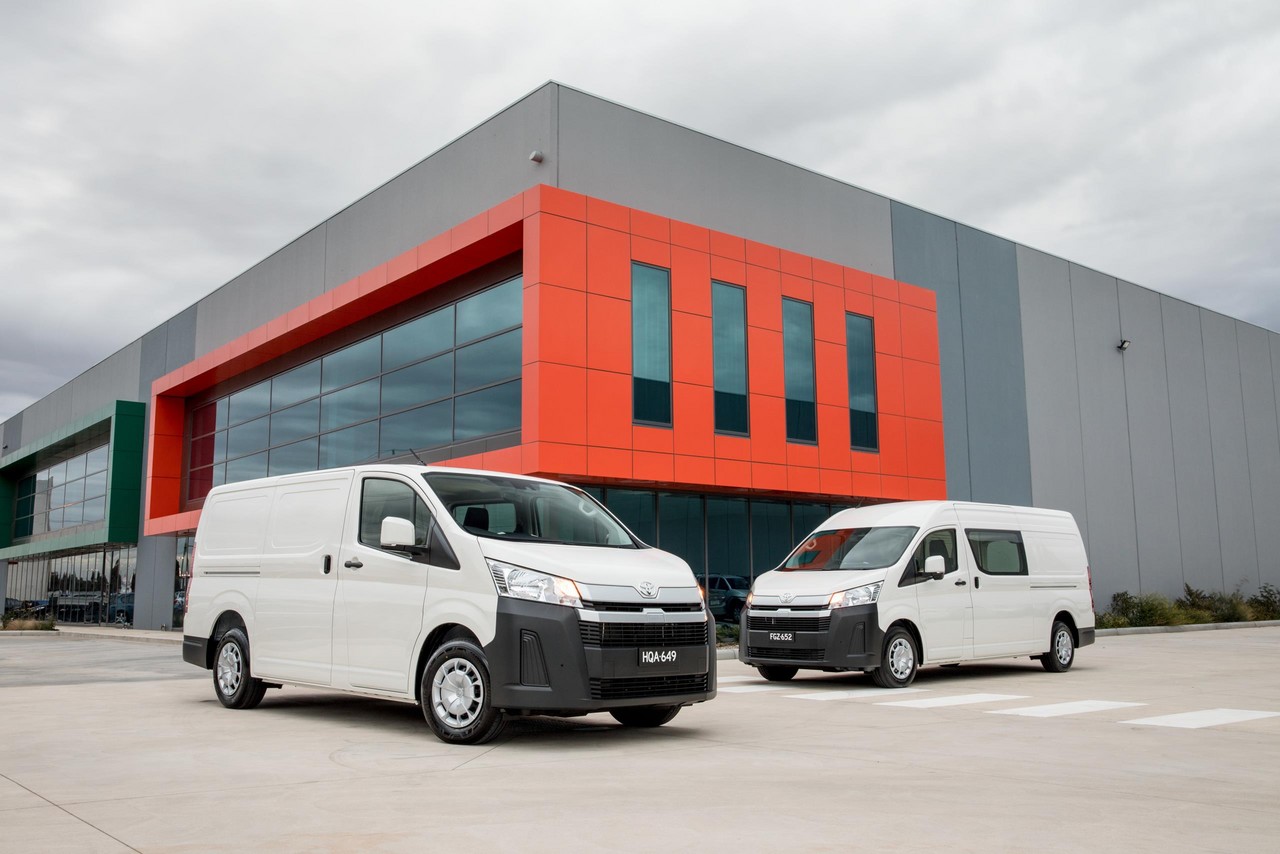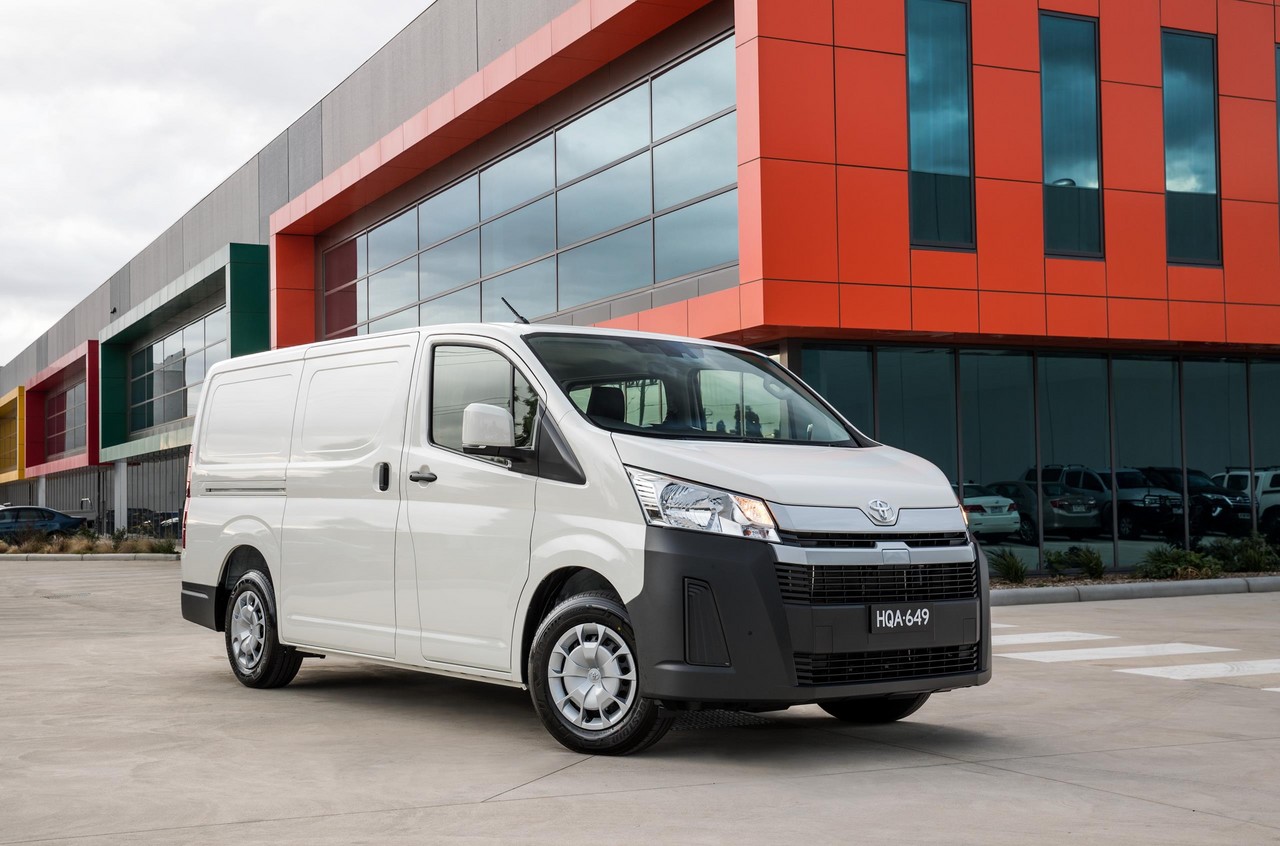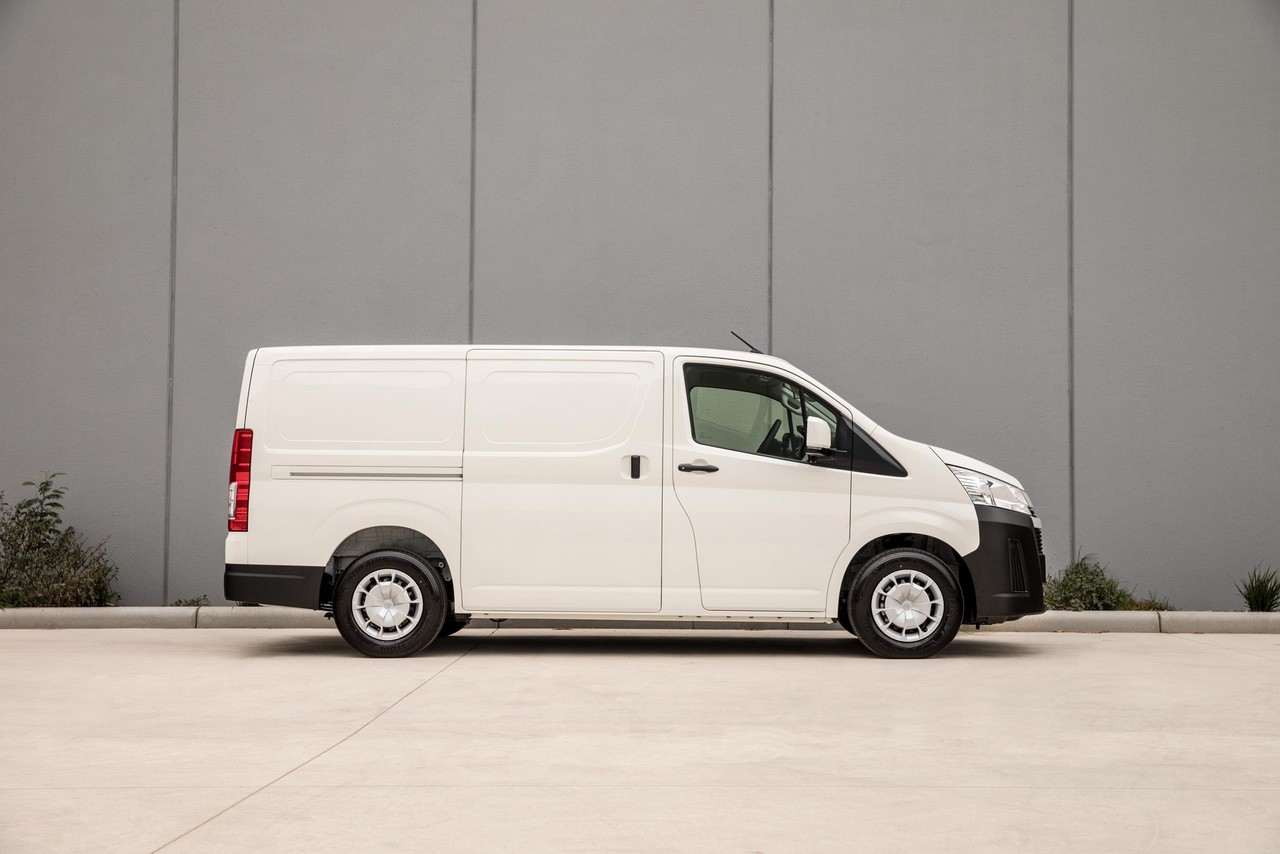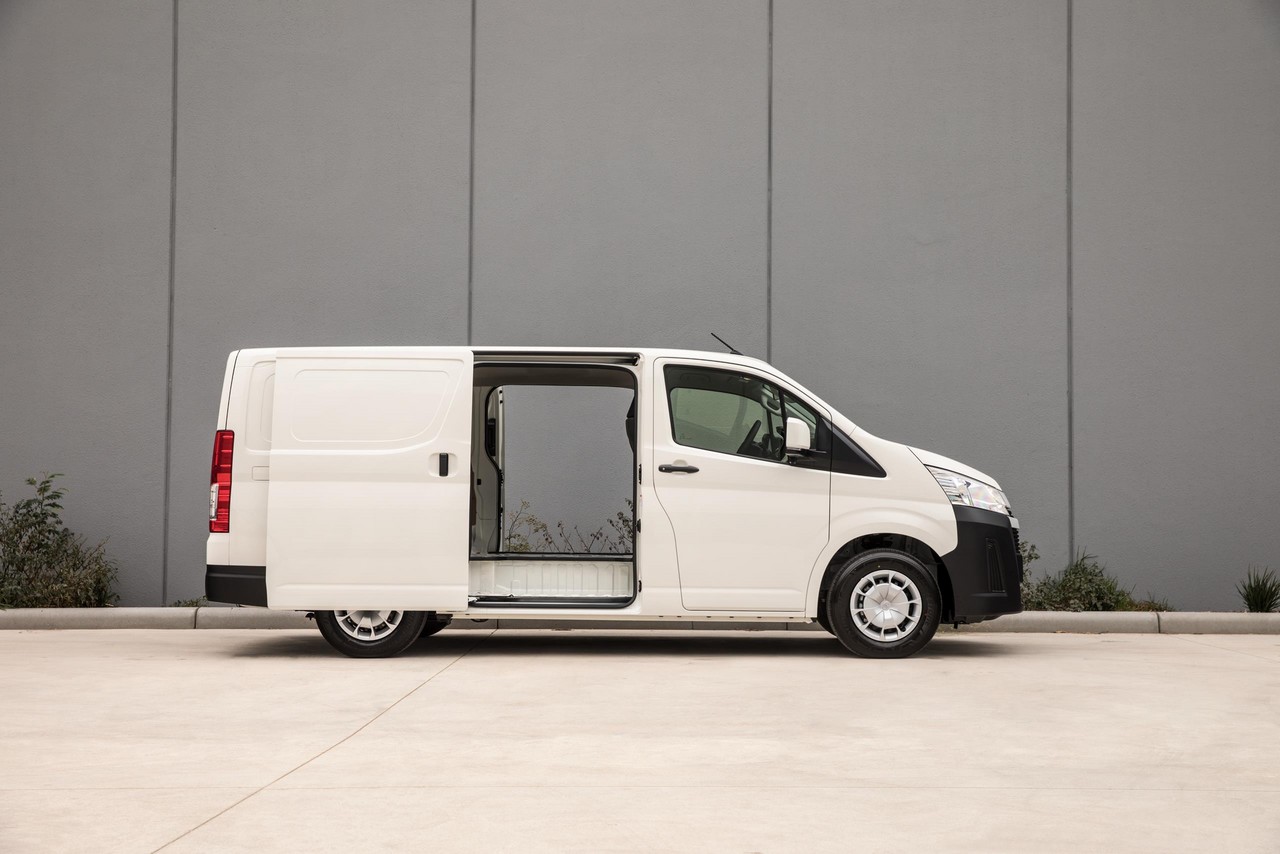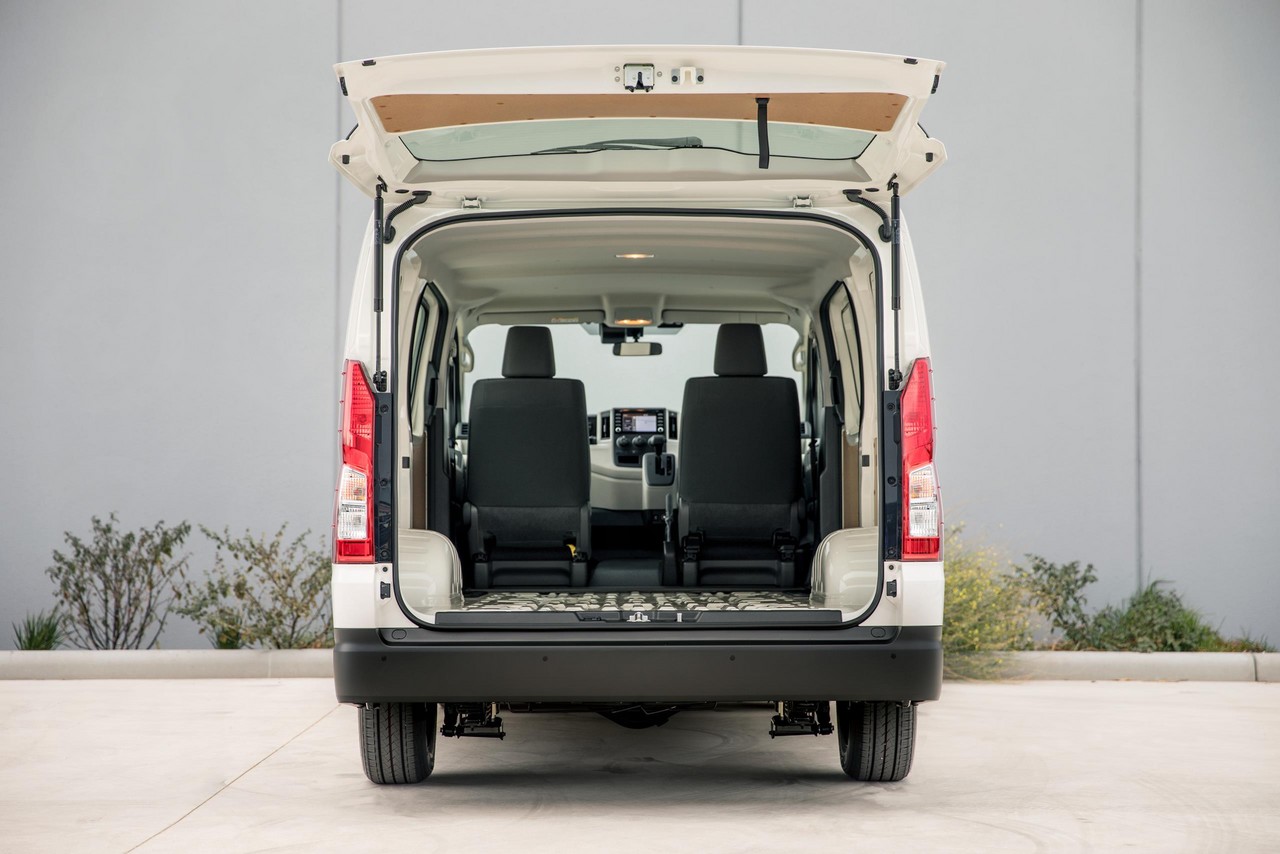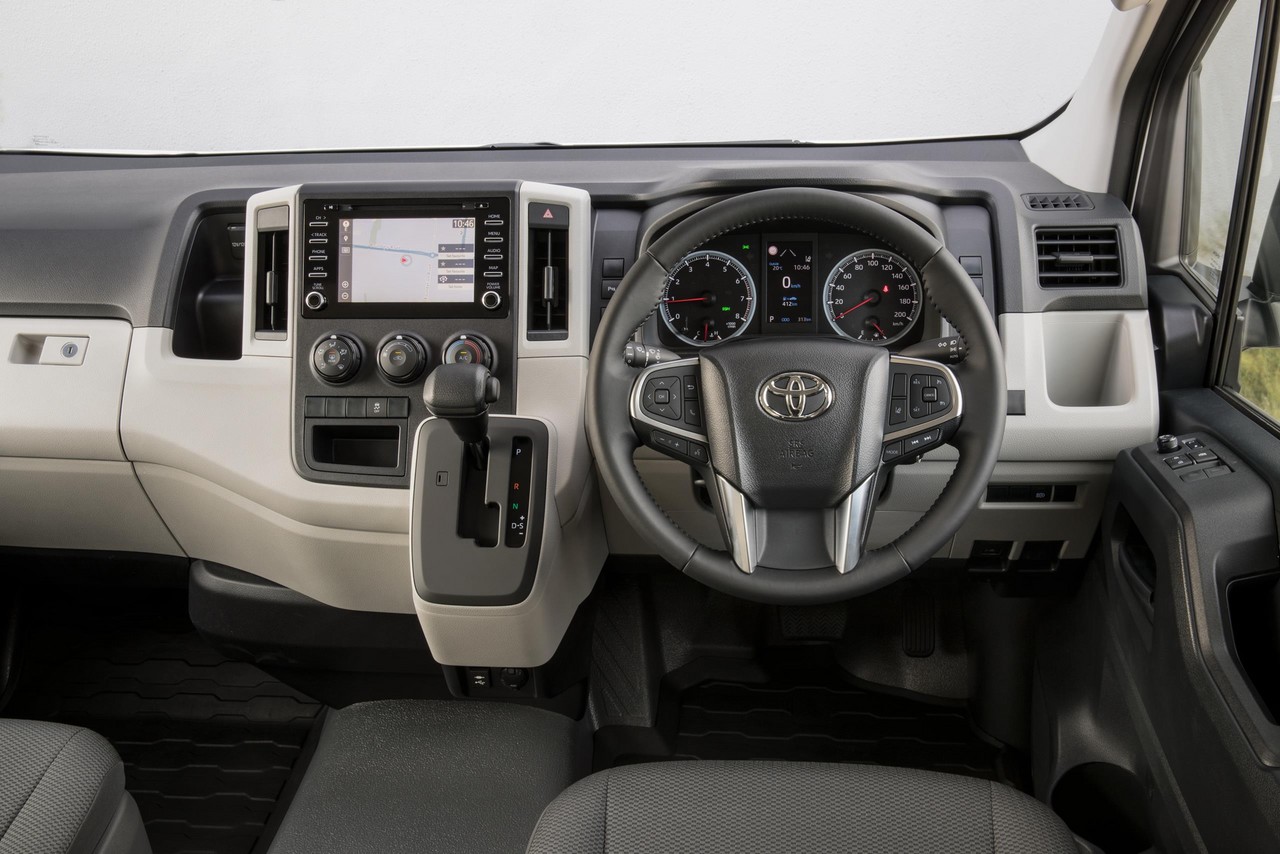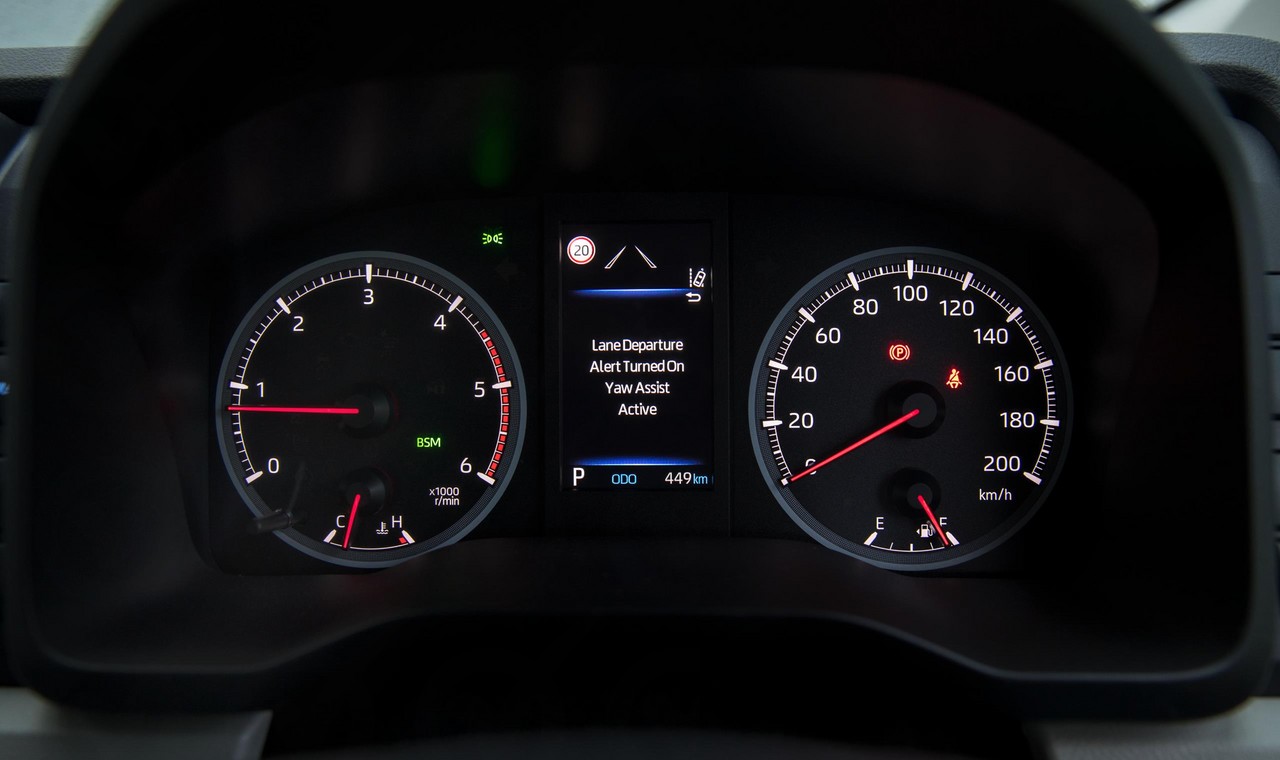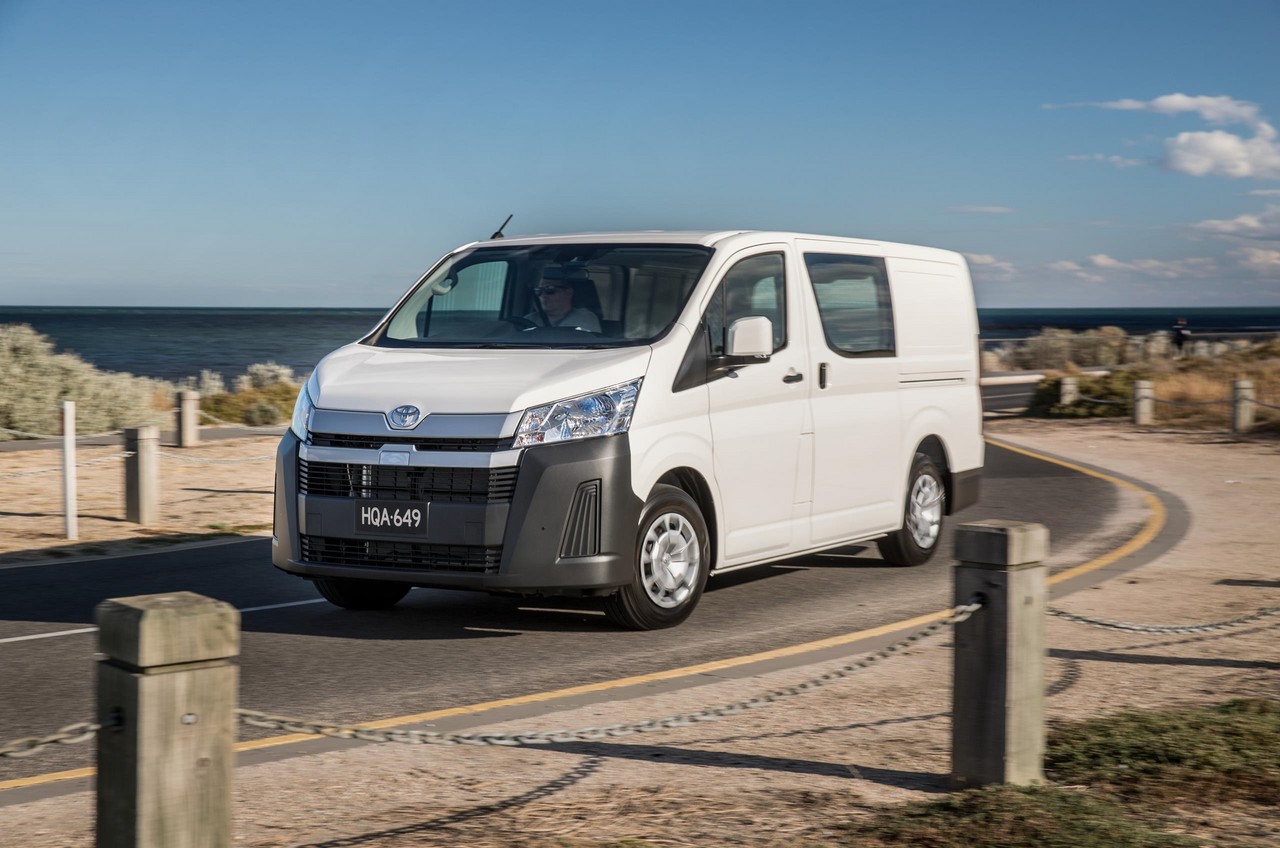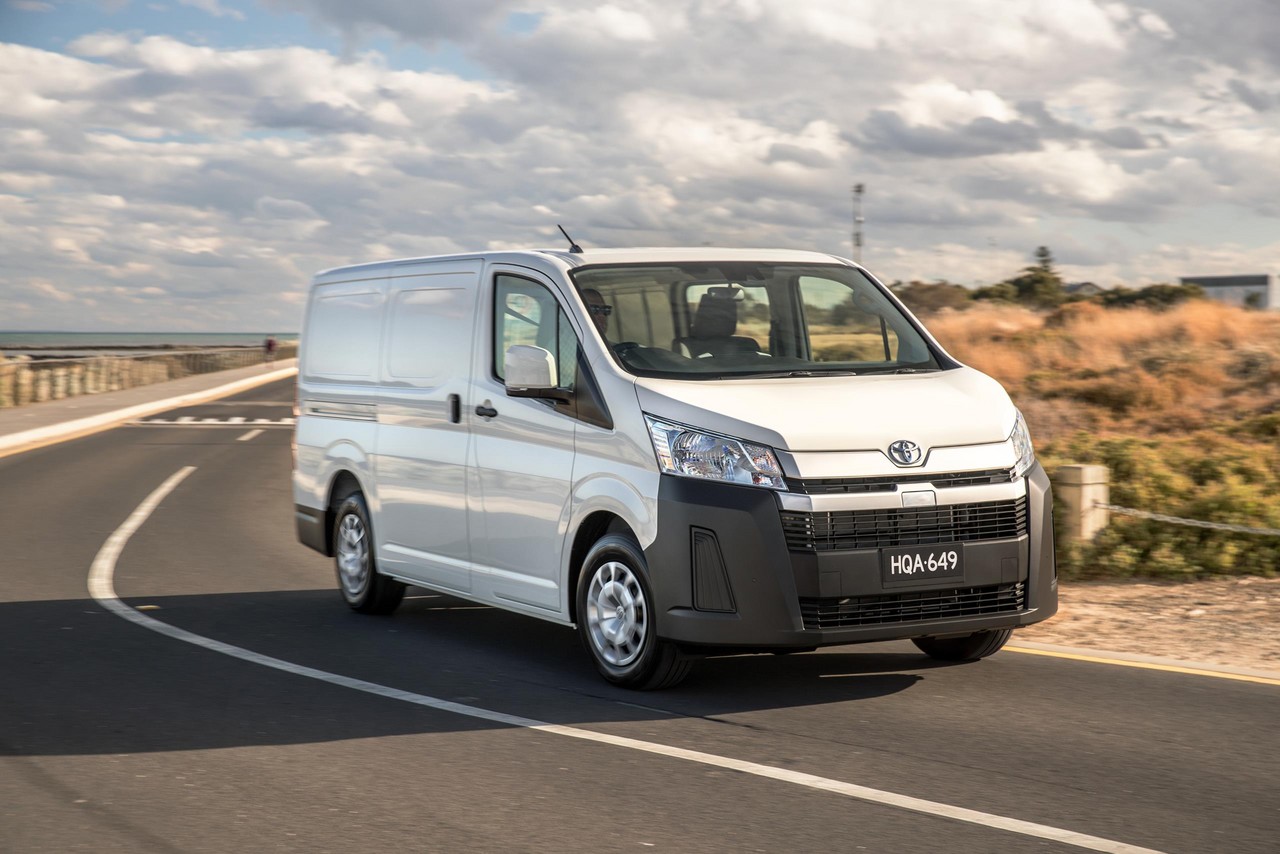
- Powerful, modern engines
- Active safety technologies fitted as standard. Five star ANCAP safety rating
- Comfortable ride
- Light steering
- Improved turning circle
- Six month service intervals
- Barn doors not available
Overview
Released in Australia in May 2019, the Toyota Mk.6 HiAce van was available in long wheelbase (LWB), Crew (five seat) and super long wheelbase (SLWB) variants. Manufactured in Kariya, Aichi, the rear-wheel drive Toyota Mk.6 HiAce was powered by 2.8-litre turbo-diesel or 3.5-litre petrol engines that were mated to six-speed transmissions. The full range is given in the table below.
Please note that the Toyota Mk.6 HiAce Commuter has been reviewed separately.
| Variant | Engine | Trans. | Peak power | Peak torque |
|---|---|---|---|---|
| LWB | 2755 cc 1GD-FTV turbo diesel I4 | 6sp man., 6sp auto |
120 kW at 3600 rpm | 420 Nm at 1600-2200 rpm |
| 3456 cc 7GR-FKS petrol V6 | 6sp man., 6sp auto |
207 kW at 6000 rpm | 351 Nm at 4600 rpm | |
| LWB Crew | 2755 cc 1GD-FTV turbo | 6sp auto | 120 kW at 3600 rpm | 420 Nm at 1600-2200 rpm |
| SLWB | 2755 cc 1GD-FTV turbo diesel I4 | 6sp auto | 120 kW at 3600 rpm | 420 Nm at 1600-2200 rpm |
| 3456 cc 7GR-FKS petrol V6 | 6sp auto | 207 kW at 6000 rpm | 351 Nm at 4600 rpm |
Body and dimensions
The Toyota Mk.6 HiAce LWB was 5265 mm long, 1950 mm wide, 1990 mm tall and had a 3210 mm long wheelbase – it had cargo capacity of 6.2 cubic metres. The Hiace SLWB, however, had a 650 mm longer wheelbase (3860 mm) such that it was 5915 mm long and had a cargo capacity of 9.0 cubic metres. Significantly, the Mk.6 HiAce had a ‘semi-bonneted’ design which enabled the engine to be positioned ahead of the front axle for easier access to the engine and improved occupant protection.
The Toyota Mk.6 HiAce vans had sliding doors on both sides of the body – designed to take a standard Australian pallet – with a glass panel in the left side door. The HiAce Crew, however, also had a glass panel for the right side door.
Suspension and steering
The Toyota Mk.6 HiAce had MacPherson strut front suspension and a leaf-sprung, rigid rear axle. Furthermore, the Mk.6 HiAce had rack-and-pinion steering with a 15.6:1 ratio.
Safety equipment
Standard safety equipment for the Toyota Mk.6 HiAce included dual front airbags, a driver’s knee airbag, front seat-mounted side airbags, front curtain airbags, ABS, electronic brake force distribution, brake assist, electronic stability control, traction control and front seatbelts with pre-tensioners and load limiters. The HiAce Crew Van was further equipped with curtain airbags for the rear seats (for a total of nine airbags).
As standard, the Mk.6 HiAce was equipped with ‘Toyota Safety Sense’ active safety technologies which included –
- Pre-Collision System (PCS) with pedestrian and daytime cyclist detection: operating at speeds above 10 km/h, PCS used a front-mounted monocular camera sensor and millimetre-wave radar sensor to detect vehicles and pedestrians on the road ahead, during the day or at night; cyclists could also be detected during daylight. If there was a collision risk, the driver would receive an audible warning and a ‘Brake’ message would be shown on the multi-information display. In its second stage, Pre-Collision Brake Assist would prepare the braking system so that it would respond faster if the brake pedal was depressed. If the driver did not react and a collision was imminent, maximum braking force would be applied automatically to reduce the severity of the collision;
- Lane Departure Alert (LDA): used the windscreen-mounted camera to monitor the vehicle’s position relative to lane markings on the road surface. If the vehicle was about to depart from its lane without the turn indicator having been applied, an audible tone would alert the driver and a warning would appear in the multi-information display. If the vehicle continued to drift, the brakes on one side of the HiAce would be applied to guide the vehicle towards the centre of its lane;
- Automatic High Beam: operating at speeds above 30 km/h, Automatic High Beam would automatically switch between low and high beam lighting according to ambient light conditions. As such, Automatic High Beam used the windscreen-mounted camera to detect the headlights of oncoming vehicles or traffic ahead and, if detected, would automatically switch to low beam to avoid dazzling other road users; and,
- Road Sign Assist (RSA): the windscreen-mounted camera could recognise certain speed limit signs so that the speed limit would be displayed on the multi-information display (MID) in the instrument cluster.
As standard, the Toyota HiAce was also fitted with:
- Blind Spot Monitor: used radar sensors mounted on the rear corners to detect vehicles in adjacent lanes as they moved into the driver’s blind spot. If detected, the driver would be alerted to their presence by the illumination of LED warning indicators in the door mirror on the side of the Toyota HiAce where there was another vehicle, and the LEDs would remain illuminated while there was another vehicle in the driver’s blind spot. If the driver operated the indicators to move into the lane where there was another vehicle in the driver’s blind spot, the LEDs would flash rapidly; and,
- Rear Cross Traffic Alert: using the same radar sensors as the Blind Spot Monitor, Rear Cross Traffic Alert could detect traffic approaching from either side of the Toyota HiAce as it reversed out of a parking space. Similarly, LEDs in the door mirror would illuminate to warn the driver.
ANCAP crash testing
In ANCAP crash testing , the Toyota Mk.6 HiAce van received a five star safety rating which included a 94 per cent adult occupant protection rating and an 88 per cent child occupant protection rating. In the frontal offset test, protection of the driver’s head, thighs, lower right leg and feet were rated as good, but protection of the lower left leg was rated as adequate (i.e. a slight risk of serious injury) and chest protection as marginal (a moderate risk of serious injury). Maximum points were awarded in the side impact test but, in the more severe pole test, chest protection was rated as adequate.
Features: Toyota HiAce Van
The standard multimedia system for the Toyota HiAce consisted of a two speaker audio system, digital radio tuner (DAB+), CD player, seven-inch touchscreen, satellite navigation with SUNA live traffic alerts, USB and auxiliary (3.5 mm) inputs, Bluetooth mobile phone connectivity, voice recognition, Siri eyes-free for compatible iPhones and ‘Toyota Link’ apps. From the fourth quarter of 2019, the system also provided Apple CarPlay and Android Auto smartphone integration – this functionality was available as a ‘no cost’ retro-fit for previously sold vehicles.
Beyond this, standard features for the Toyota Mk.6 HiAce included 16-inch steel wheels with 215/70 R16 tyres, fabric seats, air conditioning, cruise control, halogen headlights and daytime running lights, a reversing camera with guidelines, front and rear parking sensors, leather accented steering wheel, remote central locking, power adjustable and heated door mirrors, front power windows, tilt and telescopic steering wheel adjustment, a height adjustable driver’s seat, front and rear interior lamps, a 4.2-inch multi-information display (MID), two 12 volt DC accessory sockets and an immobiliser.
Features: Toyota HiAce Crew Van
Compared to the Mk.6 HiAce van, the Toyota HiAce Crew had a three-position second row bench seat with 60/40 split-fold seatbacks, two rear ISOFIX child restraint anchors, opening rear windows, halogen front fog lamps, a rear vent for the air conditioning and a digital rear view mirror with auto dimming.
Visually, the Toyota HiAce Crew could be identified by its body-coloured bumpers and door handles, and chrome garnishes (front and rear).
Brochure and specifications
